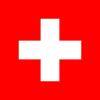Scientists describe the nascent field of paleoinspired robotics in which researchers build robots inspired by extinct animals to collect data that cannot be obtained from fossils alone. Paleontologists typically rely on fossil evidence to infer extinct species' biomechanics and environmental adaptations. However, these physical remnants provide only a partial picture. There are gaps in the fossil record left by yet-undiscovered species, and even when specimens are found, the remains often do not include all the bones and soft tissues. Thus, the field of paleontology is limited by the extremely small amount of data available from preserved fossils. Paleoinspired robots allow researchers to test hypotheses about these gaps in knowledge of morphology and to collect data that is not obtainable directly from fossils, such as motion of limbs, energy usage, or forces against the ground.
In this study, HFSP Research Grant awardees detail potential research questions that robotics can help to answer, explore previous uses of engineering techniques to analyze ancient species, and discuss future development of robotics technologies that will enable the growth of paleoinspired robotics.
There is paleontological evidence that many of the features necessary for walking on land were developed before ancient fish began living on land, leading to questions about the evolutionary principles that drove such anatomical changes in purely aquatic creatures. So far, researchers can start by analyzing extant fish species capable of both walking and swimming locomotion. Still, comparisons between species are difficult as the animals have very different anatomies and walking gaits. Instead, the HFSP Research Grant team defends that robots can be used to normalize the analysis as the same gaits can be implemented on robots of different body morphologies in ways that are not possible with real animals.

This project specifically looks at the development of robotic platforms that can replicate specific evolutionary transitions, such as the shift from water to land. Using these models, researchers can examine how particular features, like limb structure or joint orientation, would affect mobility and stability. For example, by simulating early tetrapods' walking mechanics with robots, researchers can test hypotheses about their bone structures and the evolutionary pressures that may have shaped them. These experiments also shed light on the underlying principles of movement that can apply broadly across species, helping to build a more cohesive picture of evolution across various lineages.
HFSP funding was pivotal in bringing the team together across biomechanics, robotics, and paleontology. Biomechanist Valentina Di Santo, (Stockholm University, Sweden) engineer Fumiya Iida (University of Cambridge, UK), and paleontologist Neil Shubin (University of Chicago, USA) work together to build and refine platforms that bring fossils to life in a way traditional methods can't, allowing to study evolution as a dynamic, interactive process.
While the primary goal is to understand the evolutionary history of life, there are practical applications for paleoinspired robotics. These insights could inform the design of bioinspired robots optimized for different environments, potentially aiding in tasks like underwater exploration or terrain navigation. By continuing to "evolve" these robotic models, researchers may uncover ways to create robots capable of navigating environments as effectively as their ancient biological counterparts, potentially advancing robotic technology in environmental monitoring, archaeology, and space exploration. These findings reveal not just how ancient organisms moved but also how they might have evolved under various environmental pressures, offering a new perspective on the adaptability and resilience of life on Earth.


































